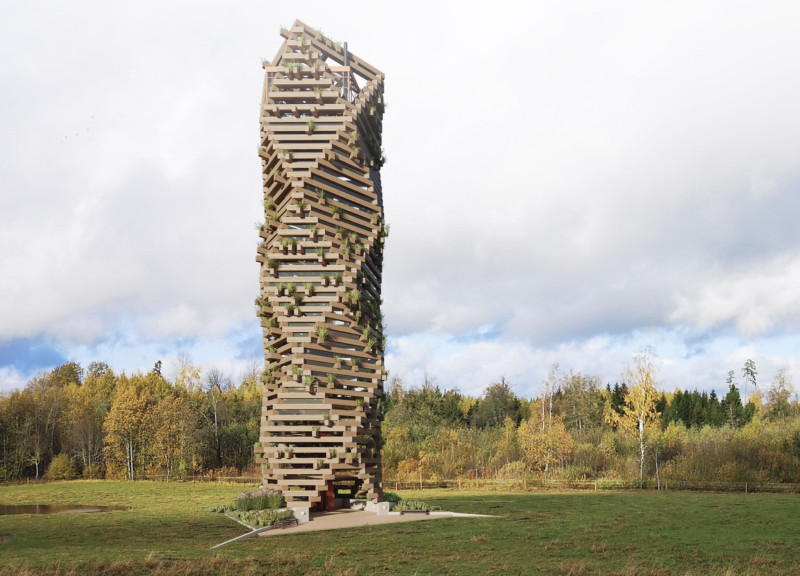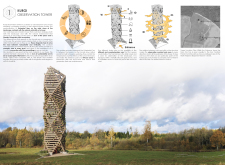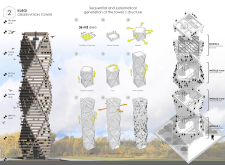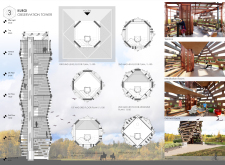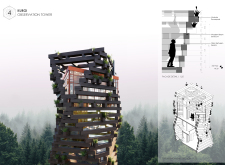5 key facts about this project
The Kurgi Observation Tower is located in a natural reserve on the Latvian-Estonian border, within a horse breeding property. The design aims to strengthen the connection between the structure and its environment while creating an engaging experience for visitors. By combining horizontal and vertical elements, the design allows the tower to operate as a point of observation and as part of the natural landscape.
Design Intentions
The design emphasizes the contrast between horizontal lines in the landscape and the tower’s verticality. The structure stands tall against the flat terrain, with angled wooden beams that add visual interest. This careful arrangement creates a balance between the two forms, drawing attention to the experience of observing the surrounding nature.
Spatial Layout and Functionality
The tower consists of five levels, each planned to serve various activities as defined by its users. This flexible layout supports a range of functions, from quiet observation to community gatherings. The top terrace acts as the main viewing platform and includes a glass house that allows clear views of the expansive scenery.
Connection to Nature
Horizontal openings between the beams provide sweeping views and enhance the connection with the surrounding environment. This feature encourages visitors to engage fully with the landscape all around them. Additionally, wooden flowerpots integrated into the structure hold native plants that thrive without extra watering, promoting local wildlife and fostering ecological relationships.
Material and Aesthetic Considerations
Wood serves as the primary material of the tower, demonstrating a focus on sustainability. This choice creates a strong link to the environment and results in a rugged yet simple design. The wooden framework blends well with nature, creating an atmosphere that is both functional and visually pleasing.
The upper terrace, open to views in all directions, provides a unique experience of the North Vidzeme Biosphere Reserve. It invites visitors to interact with the landscape and take in the natural beauty surrounding the tower.


